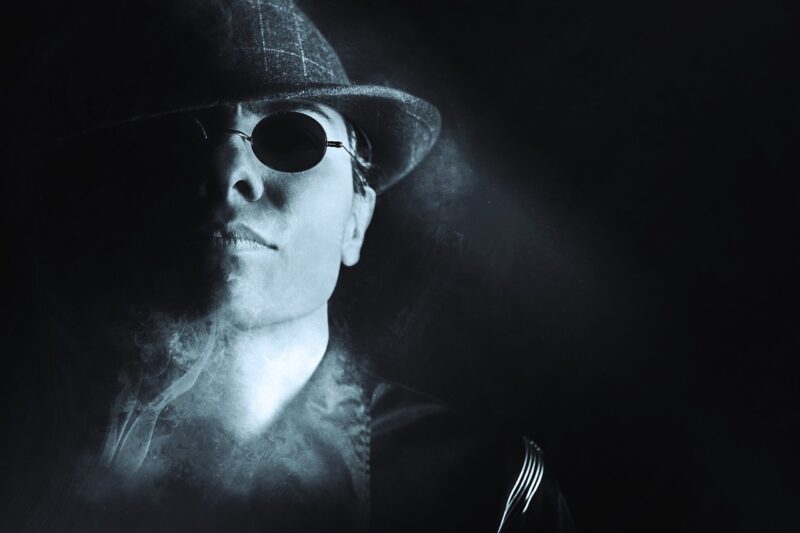The Infamous St. Valentine’s Day Massacre: How Al Capone Ruled Chicago
November 15, 2024

The St. Valentine’s Day Massacre remains one of the most shocking and notorious events in American criminal history. On February 14, 1929, seven men were brutally gunned down in a garage on Chicago’s North Side, a crime that stunned the nation and marked a climactic point in the fierce gang wars that characterized the Prohibition era. At the center of this bloody affair stood Al Capone, the infamous crime boss who dominated Chicago’s underworld during the 1920s.
1. Chicago in the Roaring Twenties
The 1920s were a tempestuous time in American history, marked by rapid social change, economic growth, and the widespread availability of illegal alcohol due to Prohibition. Speakeasies flourished, and crime syndicates battled for control over the lucrative bootlegging business.
As organized crime thrived, rival gangs fought viciously for territory and dominance. In Chicago, the most powerful figures included Al Capone and George “Bugs” Moran. Capone, originally from Brooklyn, had quickly risen to power, leveraging violence, corruption, and a steady supply of illegal liquor. Meanwhile, Moran led the North Side Gang, a group vying for control against Capone’s South Side Italian Mafia.
2. The Rivalry Between Capone and Moran
The rivalry between Capone and Moran was not merely a turf war; it was a fight to the death. By the late 1920s, tensions were running high as both gangs aimed to control the profitable liquor trade. Capone, known for his ruthless methods and ability to bribe law enforcement, began to view Moran as a significant obstacle to his power.
On the other hand, Moran was determined to resist Capone’s incursion into his territory. This conflict would soon escalate to a horrifying climax—the St. Valentine’s Day Massacre.
3. The Day of the Massacre
The events of February 14, 1929, began with a routine day at a garage owned by Moran’s gang at 2122 North Clark Street. Seven men, including high-ranking members of Moran’s crew, were gathered there. At approximately 10:30 a.m., four men, two dressed as police officers, entered the garage. They lined the gang members against the wall and opened fire with Tommy guns, leaving seven men dead and the scene drenched in blood.
The sheer violence of the massacre, where the victims received multiple gunshot wounds, sent shockwaves throughout the city. The brutality was like nothing Chicago had ever witnessed.
4. The Aftermath: A City in Fear
The massacre raised many questions about who was behind this shocking crime. While Capone was widely suspected, he denied any involvement—claiming he was out of town during the incident. The police investigation was hindered by a code of silence among gang members and corruption within the law enforcement system, making it difficult to gather evidence.
The day after the massacre, newspapers filled with sensational headlines and alarming reports of the emerging gang violence. The incident highlighted the severe lawlessness in Chicago and the inability of authorities to control the rampant crime. The murder scene became a symbol of the era.
Historians note that the St. Valentine’s Day Massacre marked a turning point in public perception of organized crime. It ultimately led to increased federal scrutiny of gang activities and the eventual downfall of several crime syndicates, including Capone’s.
5. The Legacy of Al Capone
Al Capone’s reign as Chicago’s crime lord continued amid the shockwaves of the massacre. He became infamous, portrayed in films and literature as the quintessential gangster. Capone’s wealth stemmed from both legal and illegal enterprises, including gambling, prostitution, and, of course, bootlegging. He did not just rule through fear; he was also savvy about public relations, engaging in philanthropy and community engagement to bolster his image.
Despite his criminal enterprises, Capone portrayed himself as a protector of the people. This duality contributed to his notoriety and infamy, captivating the public’s imagination.
Capone’s fall from grace was inevitable. The increasing federal crackdown on organized crime ultimately led to his arrest for tax evasion in 1931. The St. Valentine’s Day Massacre was a significant event that contributed to the intense scrutiny placed on him and other gangsters during the 1930s.
6. Conclusion: A Historical Footprint
The St. Valentine’s Day Massacre remains a critical turning point in the legacy of organized crime in America. It illustrated the lengths to which gangsters like Al Capone would go to maintain power, and it changed public perception about the seriousness of gang violence in Chicago.
Today, the name Al Capone resonates with authority and the underworld, a reminder of a tumultuous era in American history that illustrates both the fascination and horror associated with gangsters. As we continue to explore the stories of organized crime, the massacre serves as a poignant symbol of how far men would go for power, money, and control in the shadows of the law.
The lessons from this event echo in discussions about crime, governance, and society’s moral fabric even today. Understanding the dynamics of the St. Valentine’s Day Massacre sheds light on the historical context of organized crime and the transformation it brought about in law enforcement and public perception.






